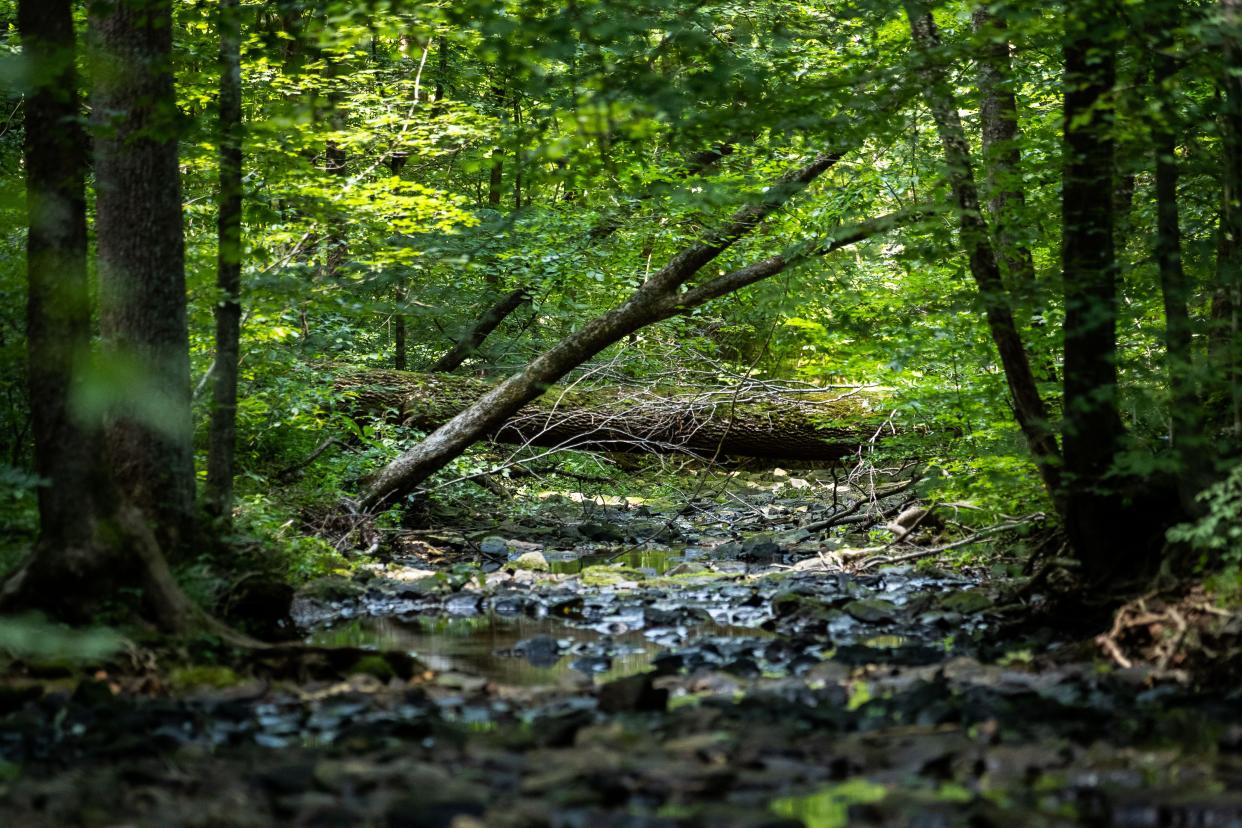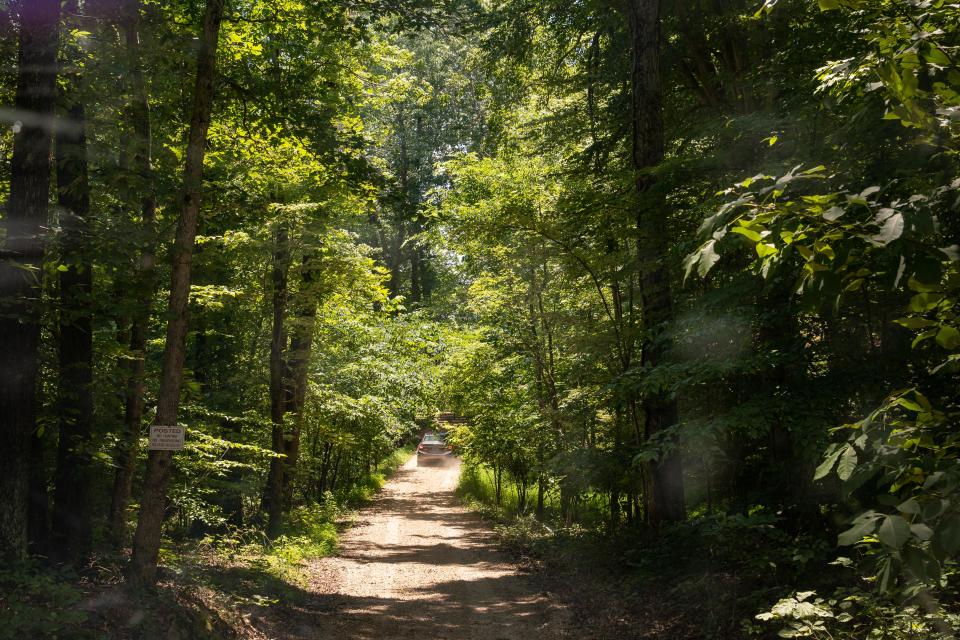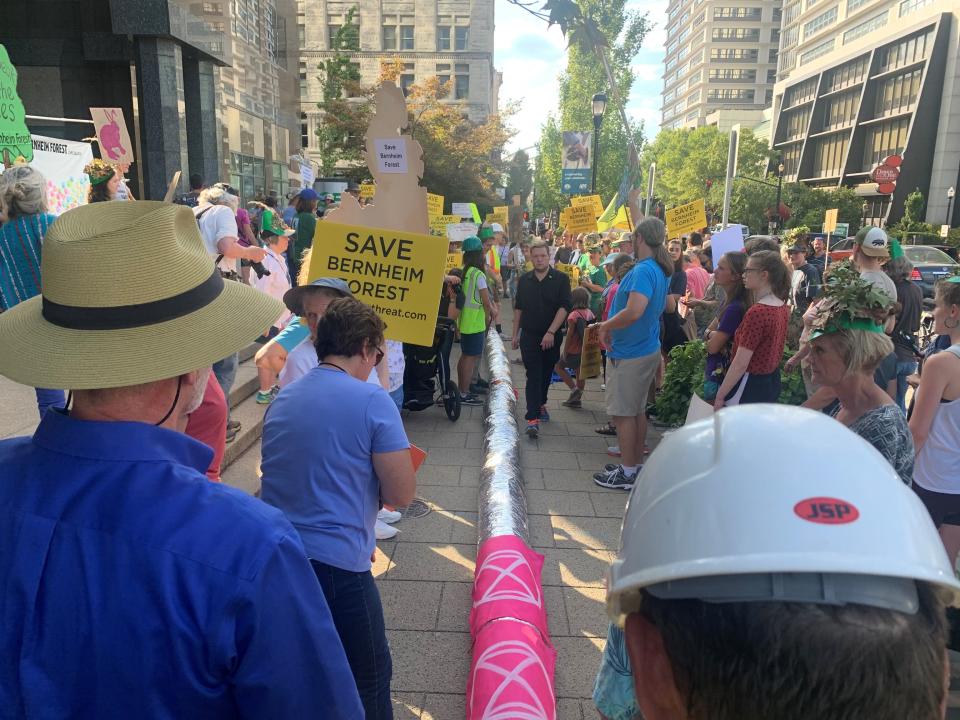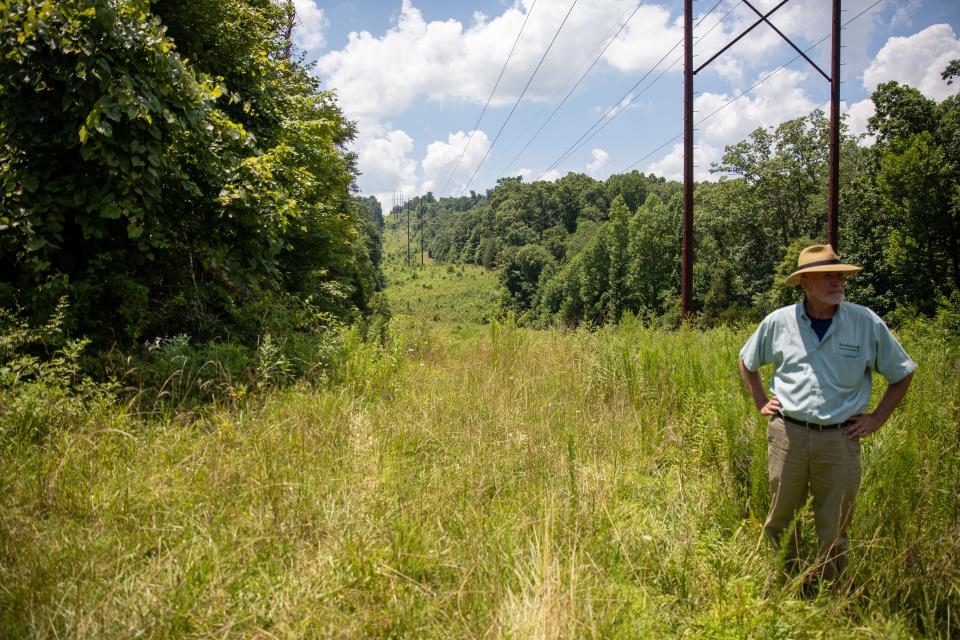LG&E still fighting to put pipeline through Bernheim forest. Here's where things stand

LG&E and the Bernheim Foundation locked horns in court this week, as the energy utility sued to break Bernheim's conservation easement and build a new gas pipeline through protected lands.
The 12-mile pipeline would run through Bernheim's Cedar Grove Wildlife Corridor, an act Bernheim says threatens a sensitive and lush forest ecosystem. On the other side, the utility says the proposed infrastructure is necessary to ensure future energy reliability to a growing Bullitt County population.
It's a fight four years in the making, and hurdles still remain. As the case unfolds, here's what to know:
Who is involved?
LG&E, Louisville's local energy utility and subsidiary of utility giant PPL, insists that the proposed gas pipeline is necessary to secure energy for Bullitt County.
The utility serves 333,000 natural gas and 429,000 electric customers in Louisville and nearby counties, including Bullitt.
The planned line would run through the land of Bernheim Arboretum and Research Forest, one of Kentucky's most storied environmental institutions. Bernheim owns more than 16,000 acres of land in Bullitt and Nelson counties.
Much of that land is open to the public, and more than 90 years after its founding, hundreds of thousands visit the forest — some of the best preserved woods in the state — every year.
Why can't LG&E build the pipeline yet?
Before the pipeline can be built, LG&E needs the land to build it on. The utility wants to use Kentucky eminent domain law to access the necessary land, which is currently protected by a conservation easement.
The land in question was purchased in 2018 ― in part by Bernheim and in part by the state through the Kentucky Heritage Land Conservation Fund ― under the agreement that the land would be protected by the conservation easement, which limits development use.

This week's Bullitt County Circuit Court battle concerns LG&E's attempt to get past the conservation easement through eminent domain, which, now that closing arguments have been presented, is up to the judge. But that isn't the only obstacle remaining for LG&E.
In April 2022, the project was paused while the U.S. Fish and Wildlife Service and Army Corps of Engineers examined whether building and maintaining the pipeline would threaten sensitive habitat and violate Endangered Species Act protections.
More:Proposed LG&E natural gas pipeline that would cut through Bernheim forest put on hold
The proposed pipeline would slice through acres of forest, waterways and habitat, home to threatened and endangered species including bats and rare snails.
And even if all is approved, LG&E still faces the rising cost of the project, which has more than doubled to $74 million since initial estimates, according to Louisville Public Media reporting — a cost ratepayers could end up shouldering.
What is Bernheim's argument?
Bernheim and its supporters, including the local Sierra Club chapter and other environmental activists, have fervently opposed the proposal since its introduction, citing its potential to harm sensitive habitat in one of the few large tracts of preserved land in the state.
"This pipeline would break up a mostly intact forest, destroy habitat and migration routes for countless wildlife, and impact clean streams for decades," Bernheim argues on its website.
Over the last several years, protesters have rallied in front of LG&E's downtown office over the proposal. Earlier in the controversy, The Courier Journal received more than 40 letters expressing opposition to the pipeline's construction.

You may also like:You don't have to go to Canada for real maple syrup. This Kentucky farm is a hidden gem
Bernheim representatives and environmental advocates have also said the pipeline represents a further entrenchment in fossil fuels, with construction of new gas distribution expected to operate for decades.
It's "a pipeline that shouldn't be built," said Mark Wourms, executive director of the Bernheim Arboretum and Research Forest, amid "a climate crisis and a biodiversity loss crisis."
He added that Bernheim wants Bullitt County's needs to be supported, but that growing energy demand should be met with more long-term, sustainable solutions, rather than fossil fuels.
When LG&E and KU announced plans to retire some of its coal generation last month, it also filed to add more than 1,200 megawatts of natural gas, another fossil fuel, in addition to 1,000 megawatts of solar.
What is LG&E's argument?
LG&E has leaned heavily into the energy needs of Bullitt County in its case for the pipeline's construction, citing local population growth forecasts and increased demand from businesses.
The biggest business interest in the pipeline initially was Jim Beam, whose local distilling operations stood to gain from the new infrastructure. Several years after the project's inception, it's unclear how much Jim Beam is relying on the construction of the new line for its business needs.
"Our current natural gas system that serves the area cannot reliably meet the needs of Bullitt County’s ongoing and future growth," LG&E argues on its website, "and does not have the capacity to provide natural gas to the area’s new homeowners and businesses."
The utility has said the pipeline would protect against future outage risk for the county, and since 2019, has deferred hundreds of requests for service in the area, citing the pipeline delays.
For subscribers:What you need to know about the bill to cut Kentucky's income tax
LG&E has also pointed to its past support for Bernheim in the form of funding for tree planting and programming, and argued that the planned pipeline provides the least impact to the environment and local wildlife.
"We feel confident in the evidence that we presented," said Chris Whelan, spokesperson for LG&E, in a statement Thursday. "We remain committed to this much needed project ... as we seek to enhance reliability for current customers in the area and to support the energy needs of this quickly growing region."

But over the last several years, the pipeline has consistently faced significant opposition. Thousands have rallied behind a Bernheim petition against the proposal, local environmental groups made sure to fill seats in the courtroom during the arguments, and regulators have pumped the brakes on approval.
"Regardless of the outcome of this case, there will be continued opposition," Wourms said. “We are not the only obstacle. LG&E has other hurdles to jump.”
Connor Giffin is an environmental reporter for The Courier Journal and a corps member with Report for America, a national service program that places journalists in local newsrooms to report on under-covered issues. The program funds up to half of corps members’ salaries, but requires a portion also be raised through local community fundraising. To support local environmental reporting in Kentucky, tax-deductible donations can be made at courier-journal.com/RFA.
Learn more about RFA at reportforamerica.org. Reach Connor directly at cgiffin@gannett.com or on Twitter @byconnorgiffin
This article originally appeared on Louisville Courier Journal: Bernheim Forest and LG&E: Where things stand in ongoing pipeline fight

